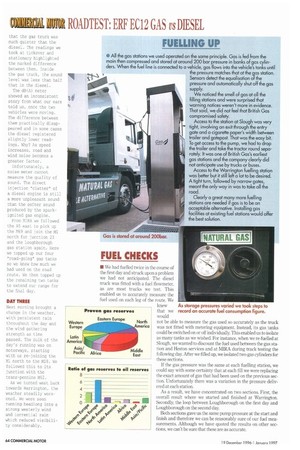FUEL CHECKS
Page 66

If you've noticed an error in this article please click here to report it so we can fix it.
• We had fuelled twice in the course of the first day and struck upon a problem we had not anticipated. The diesel truck was fitted with a fuel flowmeter, as are most trucks we test. This enabled us to accurately measure the fuel used on each leg of the route. We
knew As storage pressures varied we took steps to that we record an accurate fuel consumption figure.
would not be able to measure the gas used so accurately as the truck was not fitted with metering equipment. Instead, its was tanks amid be switched on or off individually. This enabled us to isolate as many tanks as we wished. For instance, when we re-fuelled at Slough, we wanted to discount the fuel used between the gas station and Heston services and at MIRA during track testing the following day. After we filled up, we isolated two gas cylinders for these sections.
If the gas pressure was the same at each fuelling station, we could say with some certainty that at each fill we were replacing the exact amount of gas that had been used on the previous section. Unfortunately there was a variation in the pressure delivered at each station.
As a result, we have concentrated on two sections. First, the overall result where we started and finished at Warrington. Secondly, the loop between Loughborough on the first day and Loughborough on the second day.
Both sections gave us the same pump pressure at the start and finish and therefore we can be reasonably sure of our fuel measurements. Although we have quoted the results on other sections, we can't be sure that these are as accurate.








































































































































